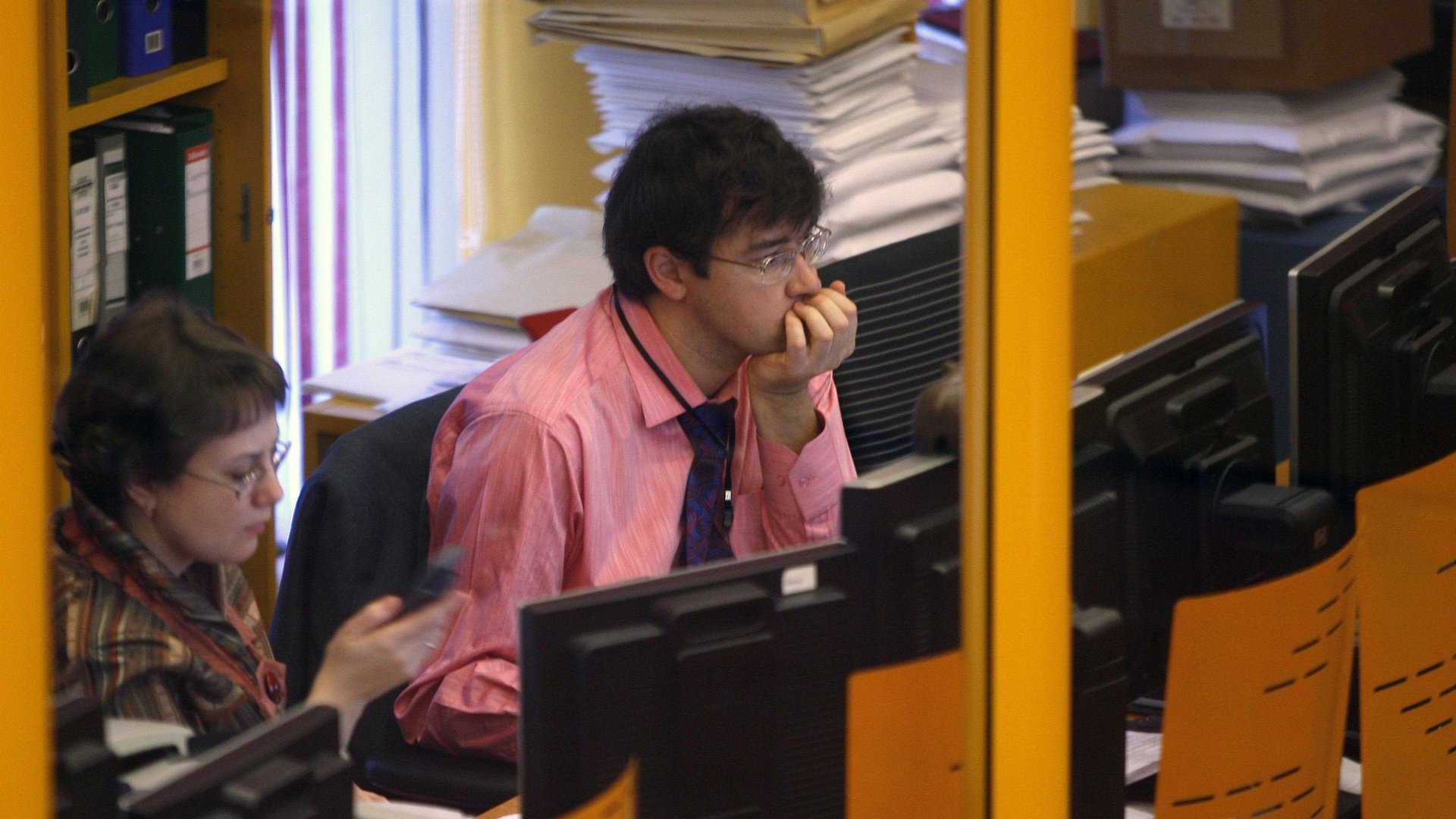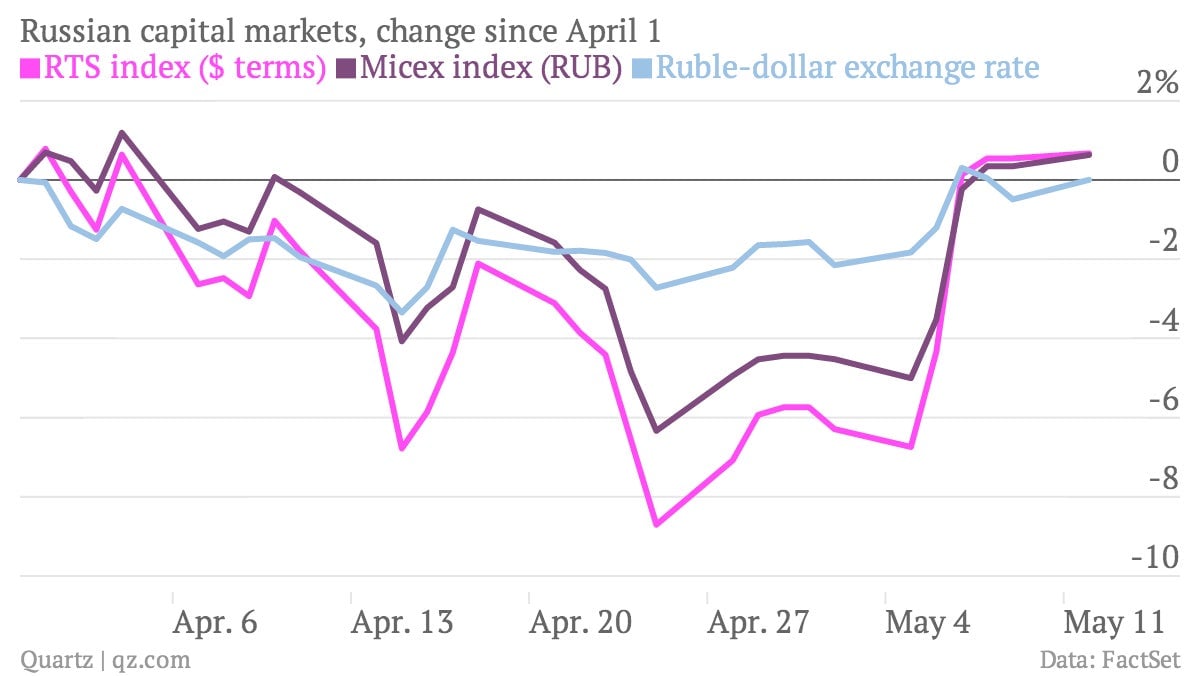Why Russia’s markets are a poor guide to what investors think right now
It’s been an eventful day. Two large regions in Ukraine’s industrial east declared their independence, refused to participate in the upcoming Ukrainian presidential election, and asked to join Russia instead. Russia said it “respects” the result of the referendums on independence and could end up absorbing the territories, like it did with Crimea. The European Union, citing the “absence of any steps toward de-escalation,” imposed a new round of sanctions (pdf) on Russian officials and, for the first time, companies.


It’s been an eventful day. Two large regions in Ukraine’s industrial east declared their independence, refused to participate in the upcoming Ukrainian presidential election, and asked to join Russia instead. Russia said it “respects” the result of the referendums on independence and could end up absorbing the territories, like it did with Crimea. The European Union, citing the “absence of any steps toward de-escalation,” imposed a new round of sanctions (pdf) on Russian officials and, for the first time, companies.
Still, you wouldn’t know any of this from looking at the markets. The ruble and Russian stocks mostly traded sideways, and even ended the day up a bit:

In fact, Russian markets are right where they were at the beginning of April, even though tensions have steadily grown since. Western officials, including the EU in its announcement of additional sanctions today, cite Ukraine’s presidential election on May 25 as a key milestone that will determine its response to Russia. Russian president Vladimir Putin called the election a “step in the right direction” last week, boosting Russian assets at the time.
But with few signs that the sides are pulling back from the brink—quite the opposite—ahead of the crucial national vote, why do markets seem so sanguine?
Because the big money is already mostly on the sidelines, Steen Jakobsen, chief economist and chief investment officer at Saxo Bank, tells Quartz. The ruble is one of the worst performing currencies against the dollar so far this year, and the money that Western companies and local savers are yanking out of the country will continue to put pressure on the currency. The Russian stock market also trades at the lowest valuation—as measured by its price-to-earnings ratio—of just about any world market, around a third of what Jakobsen considers “normal” and a quarter of where US stocks are trading at the moment. At such a rock-bottom valuation, the fact that the market remains flat is a sign that few are keen to invest, even with bargain prices.
So critics who disparage Western sanctions as having more bark than bite should not look at daily movements in the markets for validation. Jakobsen says the investors he talks with are watching the election on May 25 for a reason to rethink their stance. “I’m normally a relatively active trader, but I can’t remember my last trade,” he says. When it comes to generating investing ideas in Russian markets, “in terms of economics, geopolitics, and other trends there are a lot of crosswinds that add up to a big fat zero.”